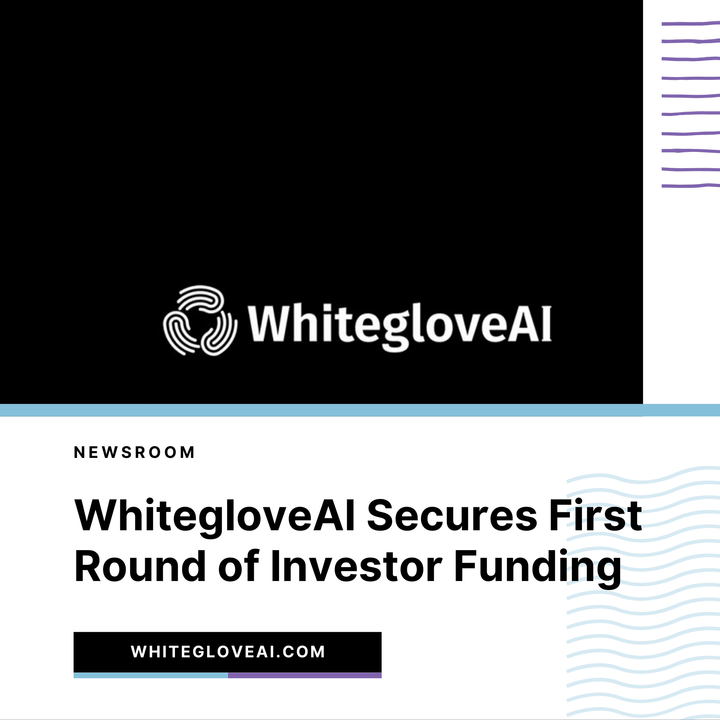A Comprehensive Guide to Mastering the New ISO 42001 AI Management System Standard

Introduction to ISO/IEC 42001:2023(E) AI Management System Standard
The dawn of the ISO/IEC 42001:2023(E) standard marks a significant milestone for organizations navigating the complex world of artificial intelligence (AI). But what exactly does this international guideline entail, and how can it reshape the management systems within your organization? Let's delve into the fabric of this framework and unpack its core objectives.
Overview of the ISO/IEC 42001:2023(E) standard as an international guideline for AI management systems
Imagine a blueprint that guides organizations in harnessing the power of AI responsibly and efficiently. That's precisely what ISO/IEC 42001:2023(E) offers. This standard is not just a set of rules; it's a comprehensive guide designed to navigate the intricacies of AI systems from inception to deployment. It touches upon every aspect of AI management, from the initial setup, scaling processes, and ensuring that AI systems are not only effective but also operate within ethical boundaries. Think of it as the compass for steering the AI ship in the right direction.
Emphasis on responsible AI practices, leadership roles, risk assessment, and policy development across organizations
Responsible AI is not just a buzzword; it's a commitment to ethical practice. The ISO/IEC 42001:2023(E) places significant emphasis on ensuring that AI is used for the greater good. This involves defining leadership roles clearly to establish accountability, carrying out meticulous risk assessments to anticipate and mitigate potential issues, and developing robust policies that align with both organizational goals and societal values. Leaders play a pivotal role in instilling a culture where AI serves to enhance, not detract from, our human experience.
Importance of flexible integration with other management systems tailored to organizational needs
No two organizations are the same, and the ISO/IEC 42001:2023(E) understands this. It champions the notion of flexibility, encouraging organizations to tailor the standard's framework to their unique needs. The goal is seamless integration with existing management systems, ensuring that AI doesn't disrupt but rather complements and enhances current operations. Whether it's quality management, information security, or environmental policies, the standard acts as a versatile tool that molds itself around the organization's objectives, allowing AI to be a driving force for innovation and growth.
In essence, the ISO/IEC 42001:2023(E) standard isn't just about keeping pace with technological advancements; it's about leading the charge towards a future where AI is managed with foresight, responsibility, and an unwavering commitment to ethical practice. By adhering to these guidelines, organizations can not only optimize their AI systems but also position themselves as torchbearers of a new era in technology management.
Framework and Scope of ISO/IEC 42001:2023(E)
Peering into the heart of the ISO/IEC 42001:2023(E) standard, we uncover the blueprint of an AI management system that's been meticulously crafted. This framework is the skeleton upon which organizations can flesh out their AI initiatives, ensuring they stand strong against ethical, legal, and practical challenges. It's not just a set of rules but a guiding star for navigating the ever-evolving cosmos of artificial intelligence.
Detailed Framework Delineated by the Standard for AI Management Systems
At its core, the framework outlined by ISO/IEC 42001:2023(E) serves as a foundation for building AI systems that are both robust and responsible. The standard underscores the need for a structured approach to AI management, including defining clear objectives, establishing leadership roles, and setting up processes for continuous improvement. By following this framework, organizations can craft AI systems that not only meet today's needs but also adapt to tomorrow's demands.
Considerations for Climate Change and Specified Roles Throughout the AI Life Cycle
Climate change is no longer a distant threat; it's a pressing reality. Recognizing this, ISO/IEC 42001:2023(E) integrates climate considerations into the AI life cycle. This means from inception to retirement, every AI system must be assessed not just for its performance and compliance but also for its environmental impact. Additionally, the standard identifies specific roles for individuals across the AI life cycle, creating accountability and clarity in who does what, when, and how.
Emphasis on Consistent Risk Assessment Processes, Treatments, Documentation, and Control Monitoring
Risk is inherent in any technological venture, more so in AI. To mitigate these risks, ISO/IEC 42001:2023(E) places a heavy emphasis on consistent risk assessment processes. This includes identifying potential hazards, evaluating their severity, and implementing treatments to control or eliminate them. Moreover, thorough documentation and regular monitoring are vital. They serve as a record of due diligence and a means to swiftly spot and rectify any deviations from the desired AI system behavior.
Resource Identification and Data Management Protocols
In the intricate tapestry of modern artificial intelligence systems, the threads that hold everything together are the resources used to build and manage them. Let's unravel the significance of these resources, which include not just AI components and data but also the human expertise steering the helm. This aspect of the ISO/IEC 42001:2023(E) standard underscores the need for precise resource identification as a cornerstone for developing responsible and effective AI.
Criticality of Resource Identification
Imagine trying to construct a building without knowing the materials at your disposal. Similarly, creating an AI system without a clear inventory of its components is a recipe for inefficiency or even failure. The ISO/IEC 42001:2023(E) standard recognizes that identifying resources such as software algorithms, hardware infrastructure, and skilled personnel is fundamental. This includes understanding the capabilities and limitations of each resource, how they interact, and their role in the larger AI ecosystem.
Mandate for Comprehensive Data Handling
Data is the fuel that powers AI systems, and how this fuel is sourced and refined directly impacts performance. The ISO/IEC 42001:2023(E) standard mandates thorough procedures for data acquisition, ensuring the quality and integrity of data from the outset. This includes verifying the data's provenance – where it comes from, who has handled it, and whether it's been altered. Proper data preparation, as outlined in the standard, utilizes methods like normalization and encoding to make the data more amenable to AI processing, thus preventing potential system errors.
- Statistical exploration to understand data distribution and central tendencies
- Cleaning and imputation to address data inaccuracies and omissions
- Normalization and scaling to ensure consistency across different measurements
- Labeling and encoding to provide structure for machine learning algorithms
By documenting the criteria and specific methods used in data preparation, organizations can provide transparency and facilitate a deeper understanding of how the AI system operates, which is crucial for assessing risks and impacts.
Ensuring Privacy and Security in Data Management
As guardians of sensitive information, organizations must erect formidable barriers to protect against data breaches and misuse. The ISO/IEC 42001:2023(E) standard delineates rigorous data management protocols to safeguard privacy and security. These protocols are not just defensive shields but also strategic assets that foster trust between the user and the AI system. Users must be aware that they're interacting with an AI system and understand its purpose, functionality, and the nature of its outputs. This degree of clarity can only be achieved through meticulous documentation and accessible communication about the AI system's technical aspects as well as its practical usage.
Implementing these protocols means adopting best practices for data storage, access control, and encryption, among other security measures. It also involves continuous monitoring to detect vulnerabilities and respond promptly to any incidents. In essence, the focus on privacy and security in the standard reflects a commitment to ethical stewardship of data, which is indispensable in today's digital world.
Supplementary Standards and Guidance
In the pursuit of mastering the ISO/IEC 42001:2023(E), it's vital to recognize the constellation of supplementary standards that orbit around it, each contributing essential components to the AI management system galaxy. In this part of our educational journey, we'll illuminate the role of additional standards such as ISO/IEC 27008, 27009, 31000:2018, and 37002, and explore how they emphasize crucial aspects like data quality, AI quality models, risk management, and whistleblowing systems.
Enhancing Data and AI Quality
The importance of data quality cannot be overstated when it comes to AI systems. It serves as the bedrock upon which reliable and effective AI applications are built. Standards such as ISO/IEC 27008 and ISO/IEC 27009 provide guidance on implementing, maintaining, and improving information security management systems, directly impacting data integrity and confidentiality. As we've learned in earlier sections, maintaining these elements is necessary for ethical data management and responsible AI practices.
Moreover, ISO 31000:2018 offers a blueprint for risk management, a process integral to any AI system. It helps organizations identify potential risks associated with their data and AI operations, evaluate them, and implement strategies to mitigate their impact. This standard works hand-in-glove with the ISO/IEC 42001:2023(E) to ensure robustness against unforeseen challenges.
Lastly, ISO 37002 provides guidelines for establishing, implementing, and maintaining an effective whistleblowing management system. This plays into the broader theme of accountability and transparency within AI systems' lifecycle, ensuring that concerns about misuse or ethical transgressions can be reported and addressed effectively, without fear of retaliation.
Governance Through ISO/IEC 38500:2015 and 38507
When it comes to IT and AI governance, ISO/IEC 38500:2015 and ISO/IEC 38507 stand out as beacons guiding the way. These standards examine the frameworks by which organizations can responsibly govern their IT resources, including AI systems. They underscore the importance of clear leadership and decision-making structures, which align with the responsibilities outlined in the ISO/IEC 42001:2023(E). Through these standards, organizations can ensure that their AI strategies are not only efficient but also ethically aligned and compliant with broader corporate governance goals.
Data Documentation and AI Risk Management
Turning our gaze to specifications and guidance provided by prominent institutions such as the DDI Alliance and the National Institute of Standards and Technology (NIST), we delve into the realm of data documentation and AI risk management. The DDI Alliance offers detailed documentation standards crucial for the transparency and traceability of data used within AI systems. Adhering to these standards allows organizations to demonstrate the provenance and quality of their data throughout its lifecycle, resonating with the principles of the ISO/IEC 42001:2023(E).
Furthermore, NIST provides invaluable resources for managing risks associated with AI technologies. Their insights help shape the way organizations approach potential hazards in AI deployment, from bias to malfunction, and contribute to the creation of more reliable, secure, and trustworthy systems. By integrating these specifications and guidelines into their AI management systems, organizations fortify their commitment to excellence and responsibility in the field of artificial intelligence.
In sum, these supplementary standards and guidelines are not just additional rules to follow; they are the instruments that harmonize the symphony of responsible AI management. They enhance the core principles laid out in the ISO/IEC 42001:2023(E) and ensure that organizations can navigate the complex landscape of AI with confidence and integrity. By weaving these strands together, businesses can craft a tapestry of ethical AI application and data management that will stand the test of time.
Facilitating Ethical AI Application and Data Management
When piecing together the intricate puzzle of ethical AI, how does the collective impact of outlined standards actually foster high-quality, ethical AI application and data management? The answer lies within the harmonious integration of various frameworks, which together, enhance the backbone of responsible artificial intelligence. Let's dive into how these standards work in tandem to elevate AI systems to a new standard of ethics and quality.
Collective Impact of Outlined Standards
In our journey through the ISO/IEC 42001:2023(E) AI Management System Standard, we've encountered multiple guidelines that serve as allies in the quest for ethical AI. These standards act like a symphony, each instrument playing a vital role in creating a harmonious outcome. They provide organizations with a blueprint to navigate the complexities of AI, ensuring that each component, from data quality to risk management, aligns with the highest ethical benchmarks. For instance, by adhering to ISO/IEC 27009, organizations can ensure the integrity and confidentiality of data, a cornerstone of trust in AI systems.
Integration of Frameworks for AI Quality, Risk Management, and Governance
The standard doesn't just list requirements; it promotes an ecosystem where AI quality, risk management, and governance coalesce. Integrating frameworks such as ISO 31000:2018 for risk management empowers organizations to anticipate and mitigate potential hazards inherent in AI deployment. This proactive approach not only safeguards against pitfalls but also instills a culture of foresight and preparedness. Similarly, incorporating governance principles from ISO/IEC 38500:2015 ensures that decision-making regarding AI aligns with broader organizational values and objectives, reinforcing a framework built on ethical pillars.
Overall Contribution to the Advancement of Ethical AI Application and Data Management
What is the sum total of these efforts? Through the strategic application of these interwoven standards, the landscape of AI is evolving towards a future where ethical considerations are not afterthoughts but foundational elements of every AI initiative. The overarching goal of ISO/IEC 42001:2023(E) is to cultivate an environment where AI contributes positively to society and industry alike, steering clear of the perils that come with unchecked AI development. It's about building a legacy of AI that's not only intelligent but also conscientious and humane.
Conclusion and Call-to-Action
In reflecting on the journey through the ISO/IEC 42001:2023(E) standard, we've navigated a path that winds through the intricate maze of AI management systems. We've highlighted the essential components that organizations should integrate into their operational fabric to foster responsible and ethical AI practices. Let's recap the critical facets of the standard that we've explored together.
The ISO/IEC 42001:2023(E) standard acts as a beacon for organizations, guiding them towards implementing robust AI management systems that are as focused on ethical considerations as they are on technical excellence. It provides an international guideline that emphasizes leadership roles in driving responsible AI initiatives, thorough risk assessment procedures, and the development of comprehensive policies that extend across every facet of an organization.
But why should organizations take heed and embrace this standard? The answer lies in the benefits that come with adherence. By adopting the ISO/IEC 42001:2023(E) standard, organizations can align themselves with a global movement towards transparent, accountable, and equitable AI systems. This alignment not only enhances reputation but also fortifies trust amongst stakeholders and the public at large. Ethical AI practices lead to more reliable and unbiased outcomes, which in turn can drive better decision-making and innovative solutions.
With the world increasingly aware of the potential pitfalls of AI, such as biases, privacy breaches, and data misuse, the standard offers a structured approach to managing these risks. It encourages organizations to consider the full lifecycle of AI systems, from conception through to deployment and beyond. The standard insists on high-quality data handling, clear documentation of data provenance, and regular monitoring of AI performance to ensure its continued efficacy and fairness.
It is this commitment to ongoing improvement and accountability that sets apart organizations that will lead in the age of AI. By embedding the principles of ISO/IEC 42001:2023(E) into their core strategies, businesses not only navigate the present complexities but also prepare for future evolutions in the AI landscape.
In light of these insights, the call-to-action is clear: it is imperative for organizations to adopt and implement the ISO/IEC 42001:2023(E) standard. It is an investment in the future—a step towards establishing a legacy of responsible and ethical utilization of AI technologies. The path forward involves assembling a dedicated team to spearhead the implementation, conducting training to align staff with the new standards, and continually auditing and refining AI systems to meet these rigorous benchmarks.
As we close this chapter, let us remember that the pursuit of ethical AI is not a destination but a continuous journey. Engaging with standards like ISO/IEC 42001:2023(E) is just the beginning. It is up to each organization to carry the torch forward, illuminating the way for AI to benefit humanity while minimizing harm. In doing so, we collectively contribute to a digital ecosystem that respects individual rights, nurtures trust, and looks ahead with a vision guided by the highest ethical principles.




